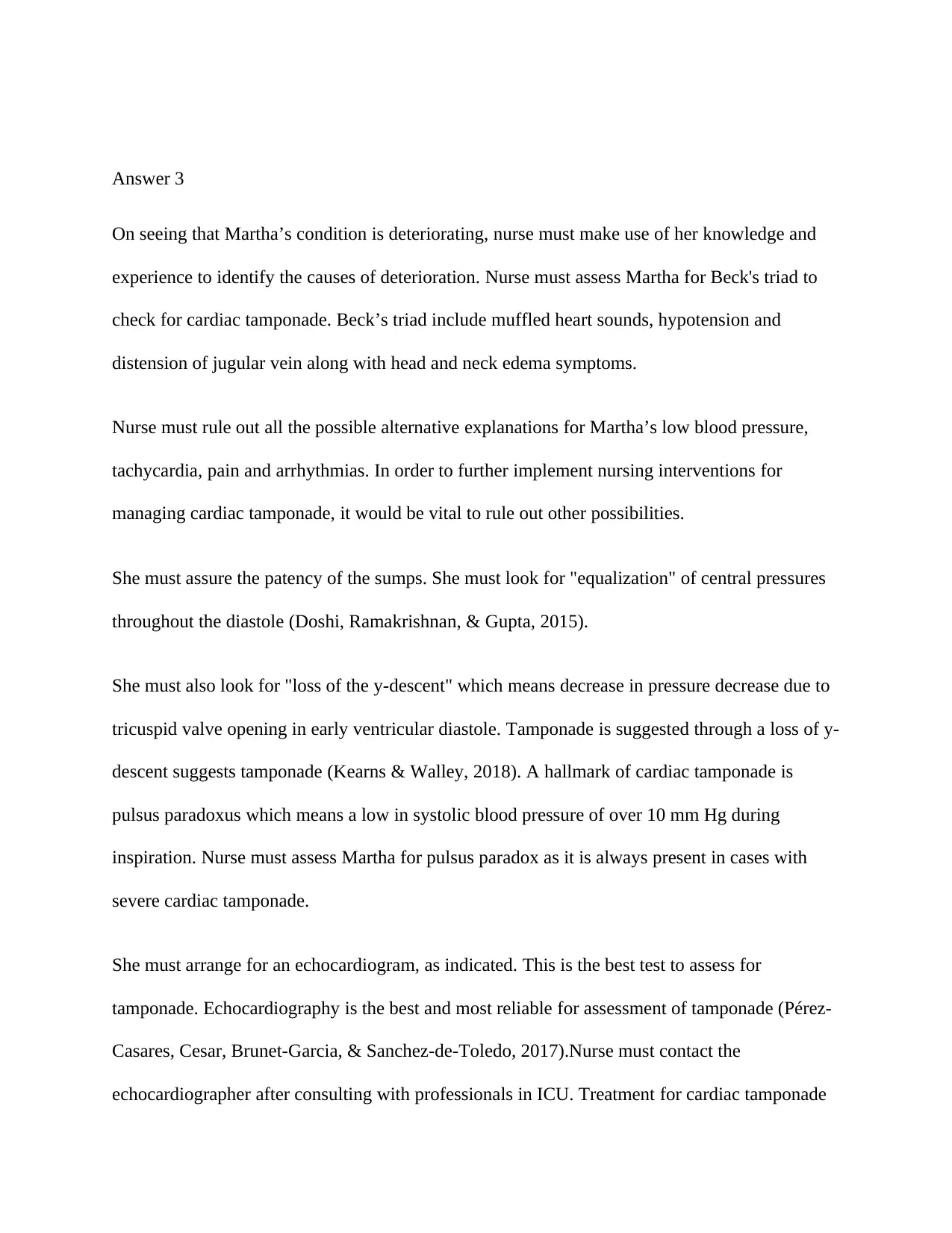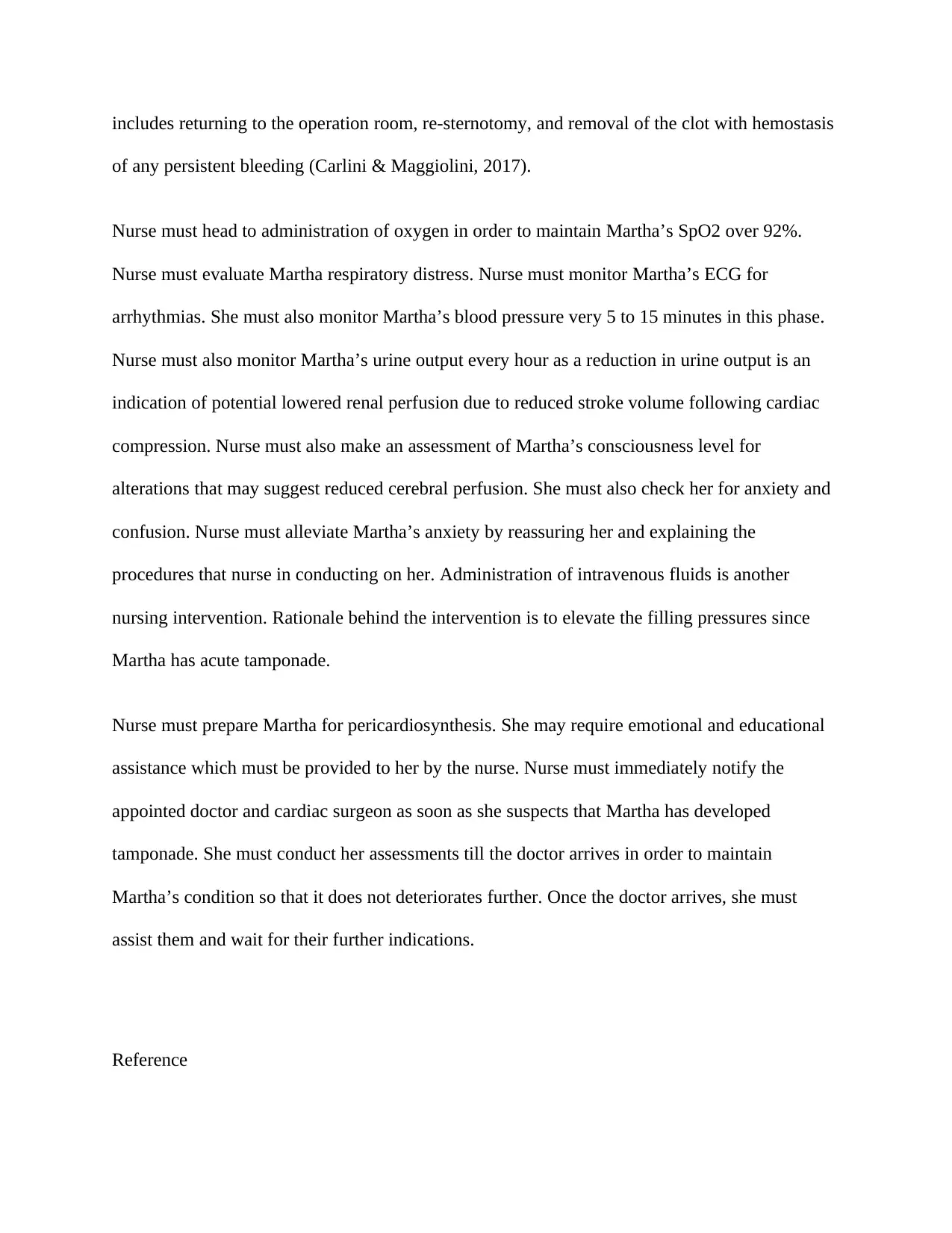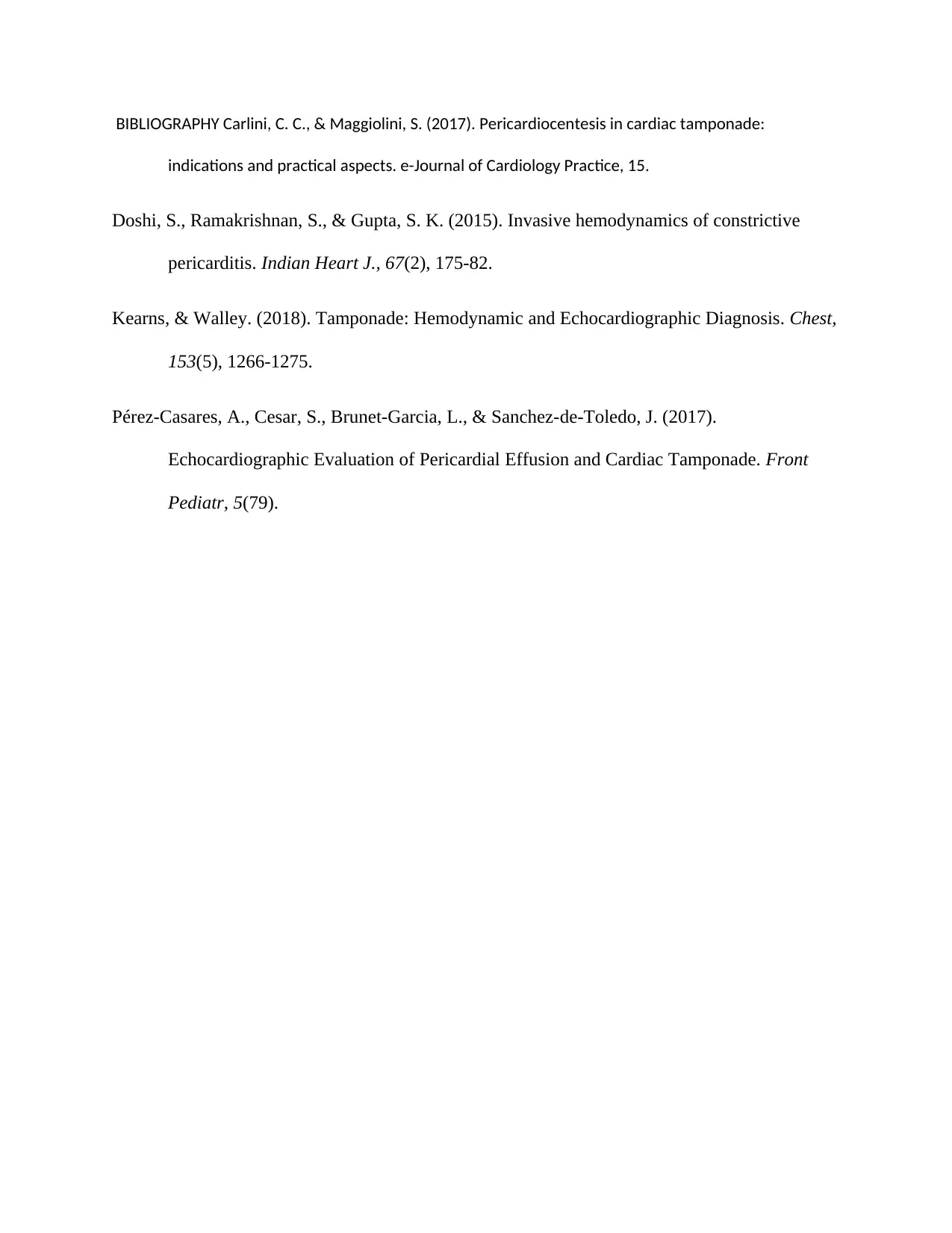University Hospital: Cardiac Tamponade Nursing Case Study Analysis
VerifiedAdded on 2022/09/27
|3
|697
|26
Case Study
AI Summary
This case study centers on a 40-year-old female, Martha Myles, admitted to the Emergency Department following a high-speed car crash, presenting with multiple injuries and later developing signs of cardiac tamponade. The assignment focuses on the crucial role of the nurse in identifying and managing this life-threatening condition. The nurse's responsibilities include assessing for Beck's triad, ruling out alternative explanations for Martha's deteriorating condition, and implementing interventions such as monitoring vital signs, arranging for an echocardiogram, and preparing for potential procedures like pericardiosynthesis. The nurse must also provide emotional support, administer oxygen and intravenous fluids, and promptly notify the medical team. The case study emphasizes the importance of continuous assessment, timely interventions, and collaboration within the healthcare team to ensure optimal patient outcomes in a critical situation.
1 out of 3









![[object Object]](/_next/static/media/star-bottom.7253800d.svg)